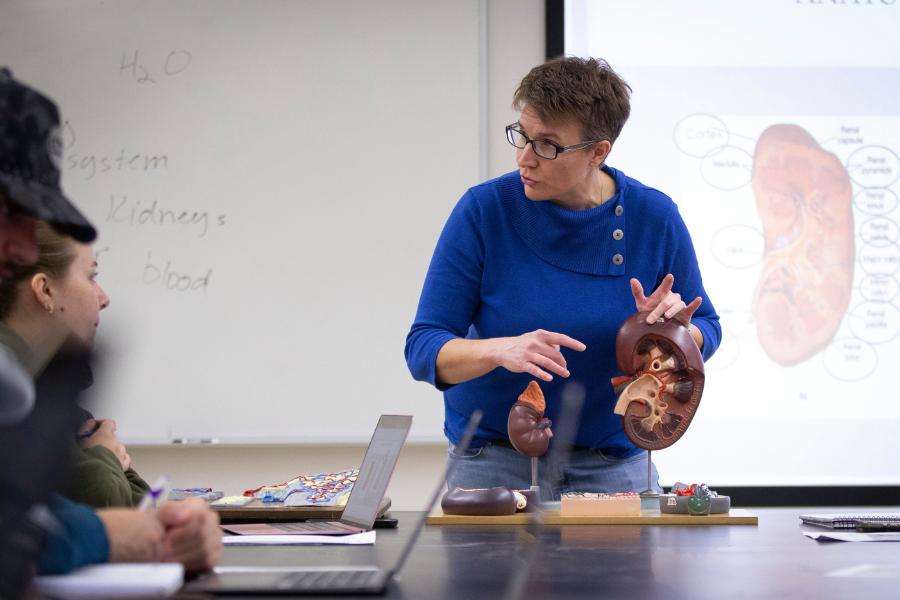Potatoes SA Supports Child Nutrition in South African Schools – PotatoPro

Strategic Partnership to Advance Sustainable Development Goals in South Africa
Introduction: A Multi-Stakeholder Initiative for Child Nutrition
A strategic partnership has been formed between Potatoes South Africa (Potatoes SA) and the Department of Basic Education (DBE) to enhance the National School Nutrition Programme (NSNP). This collaboration aims to leverage affordable, locally produced whole foods to address critical challenges in child nutrition and education, directly aligning with several Sustainable Development Goals (SDGs).
Alignment with SDG 17: Partnerships for the Goals
Reflecting the global theme of World Food Day 2025, “Hand in hand for better foods and a better future,” this initiative exemplifies the power of multi-stakeholder partnerships as outlined in SDG 17. The collaboration between a government body (DBE) and an industry organization (Potatoes SA) provides a model for achieving sustainable, food-secure futures by combining resources and expertise to address systemic issues like rising food costs and budgetary constraints within the NSNP.
Addressing Malnutrition and Enhancing Education through a Nutrient-Dense Staple
Contribution to SDG 2 (Zero Hunger) and SDG 3 (Good Health and Well-being)
The core of the partnership is to combat child malnutrition, a primary target of SDG 2, and promote overall health as per SDG 3. By incorporating potatoes into school meals, the program addresses these goals in several ways:
- Nutrient Density: According to Dr. Carmen Muller, a nutritionist at the University of Pretoria, potatoes are a nutritional powerhouse offering vitamins, minerals, and high-quality protein essential for combating micronutrient deficiencies and supporting healthy development.
- Food Security: Potatoes function as a “meal extender,” enabling the NSNP to stretch limited ingredients further, thereby enhancing food security for learners who may not have access to such foods at home.
- Affordability and Accessibility: As an affordable and locally produced staple, potatoes offer a sustainable solution to providing nutritious meals on a large scale.
Impact on SDG 4: Quality Education
The initiative directly supports SDG 4 by recognizing that good nutrition is a prerequisite for effective learning. Willie Jacobs, CEO of Potatoes SA, stated that providing nutrient-dense foods is critical to avoid “empty calories that leave them hungry and lethargic.” A proof-of-concept trial demonstrated a clear link between improved nutrition and educational outcomes.
Pilot Program Outcomes and Future Implications
Proof-of-Concept Trial Results
A trial was conducted at five schools in Gauteng to assess the impact of incorporating potatoes into the NSNP. The participating schools were:
- Moses Kotane Primary (Soweto)
- Dulcie September Primary (Rabie Ridge)
- Kgabo Primary (Atteridgeville)
- Banareng Primary (Saulsville)
- Morakoma Primary (Mamelodi West)
The trial revealed notable improvements in learners, directly contributing to a better learning environment:
- Enhanced focus and concentration in the classroom.
- Increased energy levels throughout the school day.
- Improved satiety, reducing hunger among students.
Conclusion: Scaling for National Impact
Childhood malnutrition remains a significant barrier to health and education across sub-Saharan Africa. By integrating nutrient-dense, locally produced foods such as potatoes into school meals, South Africa is taking a meaningful step toward achieving SDG 2 (Zero Hunger) and SDG 4 (Quality Education). This partnership demonstrates a scalable model for ensuring that, as Mr. Jacobs noted, “every meal count[s], for every child, every day,” thereby unlocking the potential of the nation’s youth.
1. SDGs Addressed in the Article
The article highlights several issues that are directly connected to the United Nations Sustainable Development Goals (SDGs). The analysis identifies the following SDGs as being most relevant:
- SDG 2: Zero Hunger: The core theme of the article is tackling child malnutrition and improving food security through the National School Nutrition Programme (NSNP). It explicitly mentions the goal to “end hunger and improve child nutrition.”
- SDG 3: Good Health and Well-being: By focusing on providing nutrient-dense meals to combat micronutrient deficiencies and support healthy development, the initiative directly contributes to the health and well-being of children. The article notes that malnutrition has “long-term consequences for health.”
- SDG 4: Quality Education: The article establishes a clear link between nutrition and education. It states that the partnership aims to improve “learning outcomes” and that the trial revealed “notable improvements in learner focus, energy, and satiety,” which are essential for effective learning.
- SDG 17: Partnerships for the Goals: The entire initiative is framed as a collaboration. The article emphasizes the “power of partnership between governments, industries, and communities,” specifically highlighting the joint effort between Potatoes South Africa (an industry body) and the Department of Basic Education (a government entity).
2. Specific Targets Identified
Based on the content of the article, the following specific targets under the identified SDGs can be pinpointed:
-
SDG 2: Zero Hunger
- Target 2.1: By 2030, end hunger and ensure access by all people, in particular the poor and people in vulnerable situations, including infants, to safe, nutritious and sufficient food all year round. The article addresses this by focusing on providing daily, nutrient-dense meals to learners in “under-resourced communities” through the NSNP.
- Target 2.2: By 2030, end all forms of malnutrition, including achieving, by 2025, the internationally agreed targets on stunting and wasting in children under 5 years of age, and address the nutritional needs of adolescent girls, pregnant and lactating women and older persons. The initiative’s primary goal is to “tackle child malnutrition” and “combat micronutrient deficiencies” among school-aged children.
-
SDG 4: Quality Education
- Target 4.a: Build and upgrade education facilities that are child, disability and gender sensitive and provide safe, non-violent, inclusive and effective learning environments for all. The provision of nutritious school meals is a key component of creating an “effective learning environment,” as good nutrition is described as the “foundation of learning” that helps “unlock children’s potential.”
-
SDG 17: Partnerships for the Goals
- Target 17.17: Encourage and promote effective public, public-private and civil society partnerships, building on the experience and resourcing strategies of partnerships. The article is a case study of this target in action, detailing the partnership between “Potatoes South Africa (Potatoes SA) has joined forces with the Department of Basic Education (DBE).”
3. Indicators Mentioned or Implied
The article implies several qualitative and quantitative indicators that can be used to measure progress towards the identified targets:
-
For SDG 2 (Zero Hunger)
- Implied Indicator: Prevalence of malnutrition and micronutrient deficiencies among learners. The article states that “childhood malnutrition and micronutrient deficiencies remain major challenges,” implying that a reduction in these rates would be a key measure of success. This aligns with official indicators like 2.2.1 (Prevalence of stunting) and 2.2.2 (Prevalence of malnutrition).
-
For SDG 4 (Quality Education)
- Mentioned Indicator: Learner focus, energy, and satiety. The article explicitly reports that the trial “revealed notable improvements in learner focus, energy, and satiety.” These serve as direct, albeit qualitative, indicators of a more effective learning environment.
- Implied Indicator: Improved learning outcomes. The partnership’s stated aim is “improving learning outcomes,” suggesting that academic performance, attendance, or cognitive development test scores could be used as long-term indicators.
-
For SDG 17 (Partnerships for the Goals)
- Mentioned Indicator: The existence and operationalization of the partnership. The article details the “proof-of-concept trial” conducted at five schools as a tangible outcome of the collaboration between Potatoes SA and the DBE, serving as a direct indicator of an active public-private partnership.
4. Summary Table of SDGs, Targets, and Indicators
| SDGs | Targets | Indicators |
|---|---|---|
| SDG 2: Zero Hunger | Target 2.1: End hunger and ensure access to safe, nutritious food. Target 2.2: End all forms of malnutrition. |
Reduction in the prevalence of child malnutrition and micronutrient deficiencies among learners in the NSNP. |
| SDG 3: Good Health and Well-being | (Implied) Contribution to healthy development and well-being through improved nutrition. | Improved health metrics related to nutrition and cognitive development in children. |
| SDG 4: Quality Education | Target 4.a: Provide effective learning environments for all. | Reported improvements in “learner focus, energy, and satiety”; long-term improvement in “learning outcomes.” |
| SDG 17: Partnerships for the Goals | Target 17.17: Encourage and promote effective public-private partnerships. | The establishment and execution of the partnership and its “proof-of-concept trial” between Potatoes SA and the Department of Basic Education. |
Source: potatopro.com
What is Your Reaction?
 Like
0
Like
0
 Dislike
0
Dislike
0
 Love
0
Love
0
 Funny
0
Funny
0
 Angry
0
Angry
0
 Sad
0
Sad
0
 Wow
0
Wow
0
















































:focal(1500,1000)/https://media.globalcitizen.org/a6/9a/a69a4720-d8a1-4715-b596-18738d03c05c/rotary_polio_hero_image.jpg?#)







/countries/sri-lanka/photo-credit---dmc-sri-lanka.tmb-1200v.jpg?sfvrsn=dc298bcc_1#)

















